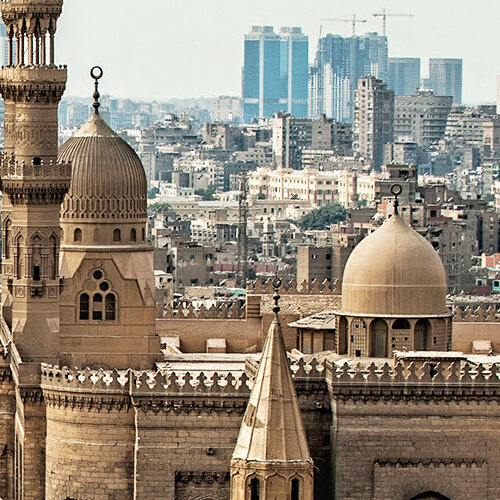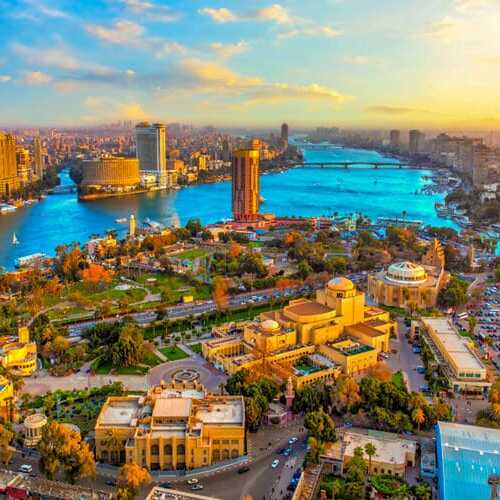No other nation in the world says ‘Welcome’ as often as the Egyptians, and every time, they mean it. While the ancient civilization of Egypt continues to amaze, contemporary Egyptians are equally remarkable.
The Complex of Sultan Ashraf Barsbey
Exploring the Sultan Ashraf Barsbey Complex: A Historical Jewel in Cairo's Northern Cemetery
Nestled amidst the historic Northern Cemetery, the Sultan Ashraf Barsbey complex stands as a testament to the architectural grandeur of a bygone era. This significant site, positioned between the Mosque of Qaitbey and the tomb of Sultan Barquq, is an integral part of Cairo’s rich historical tapestry.
Enclosed within a robust stone wall, the complex has witnessed the passage of time, with parts of it, like the Sufi learning center and student hostels, succumbing to disrepair. However, the mosque-madrassa within the complex remains a resilient structure, proudly accessible to visitors and history enthusiasts alike.
Sultan Barsbey, who reigned from 1422 to 1438, was not only a ruler but also a patron of architecture. Apart from this complex, he commissioned another mosque on Sharia Al-Muizz, adjacent to Sharia Al-Muski. It is within this complex, though, that Sultan Barsbey chose his final resting place. His tomb is a masterpiece, crowned by a dome resplendent with intricate star patterns. These designs are reminiscent of ancient chevron motifs, while also echoing the elegance of the dome of Qaitbey.
The interior of the complex is equally striking, with floors laid in exquisite marble. Adding to the sanctity of the site is an altar crafted from ivory, a rare and luxurious material, indicative of the complex’s historical significance.
A visit to the Sultan Ashraf Barsbey complex offers more than just a glimpse into Cairo’s history; it’s an immersive journey into the artistic and cultural zenith of the Mamluk era, where every stone and carving speaks volumes of the city’s glorious pa
Created On March 18, 2020
Updated On July 22 , 2025
CAIRO Travel Guide
- Al-Azhar Mosque
- Al-Azhar To The Citadel
- Amir Taz Palace
- Aqsunur’s Mosque
- Bab Zuweila
- Beit Al-Harrawi
- Beit Al-Suhaymi (Al-Suhaymi House)
- Beit Zeinab al-Khatoun
- Bein al-Qasreen STREET (Between The Two Palaces {Street})
- Ben Ezra Synagogue
- Church of St. Barbara
- Coptic Cairo
- Egyptian Textile Museum
- Gawhara Terrace
- Gayer-Anderson Museum
- Ibn Tulun Citadel
- Khan Al-Khalili Bazaar (Cairo’s Most Famous Bazaar)
- Khanqah & Mausoleum of Sultan Baybars al-Gashankir
- Khanqah-Mausoleum of Farag Ibn Barquq
- Madrassa & Mausoleum of as-Salih Ayyub
- Madrassa & Mausoleum of Qalawun
- An-Nasir Mohammed Bin Qalawoon Mosque
- Madrassa And Mausoleum of Barquq
- Mausoleum of Al-Ghouri
- Midan Al-Hussein (Sayedna Al-Hussein Square)
- Mosque of Al-Hakim
- Mosque of Al-Mu’ayyad Shaykh
- Mosque of al-Aqmar
- Mosque of Amr ibn al-As
- Mosque of An-Nasir Mohammed
- Mosque of Aslam al-Silahdar
- Mosque of Ibn Tulun
- Mosque of Mohammed Ali
- Mosque of Sayyidna al-Hussein
- Mosque-Madrassa of Al-Ghouri
- Mosque-Madrassa of Sultan Hassan
- Mosque-Madrassa of Umm Sultan Sha’aban
- Museo Mevlevi
- Museum of Islamic Art
- Northern Cemetery
- Northern Enclosure
- Northern Walls and Gates
- Sabil And Kuttab Of Abdel Rahman Katkhuda
- Sabil of Muhammed Ali Pasha
- Sharia al-Muizz li-Din Allah
- The Church of St Sergius & Bacchus
- The Citadel Of Saladin
- The Complex of Sultan Ashraf Barsbey
- The Coptic Museum (The Only Coptic Museum In Egypt)
- The Egyptian Museum
- The Hanging Church
- The Khayrbek Complex
- The Mosque of Sultan Qaitbey
- The Roman Towers
- Wikala al-Bazara
- Wikala of Al-Ghouri



